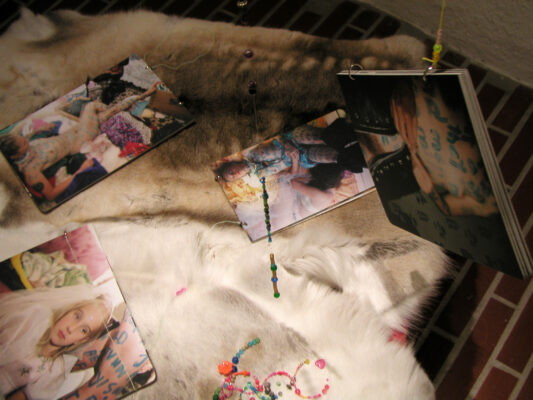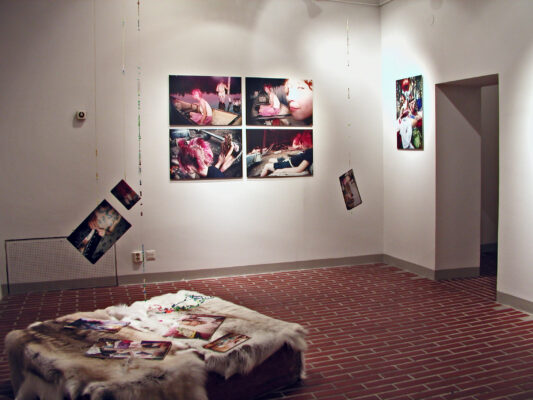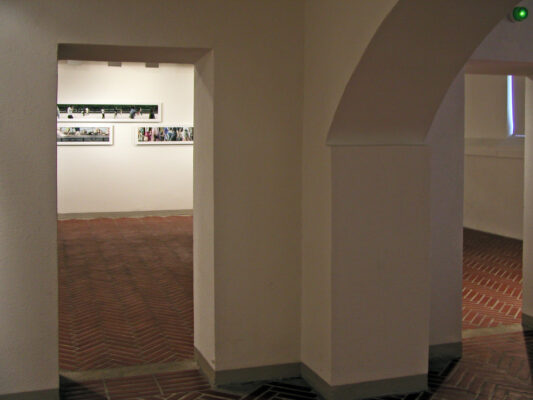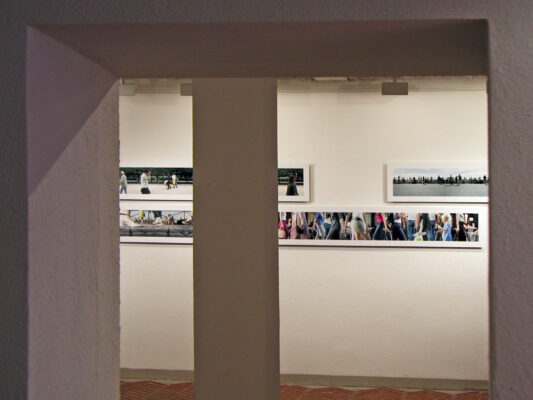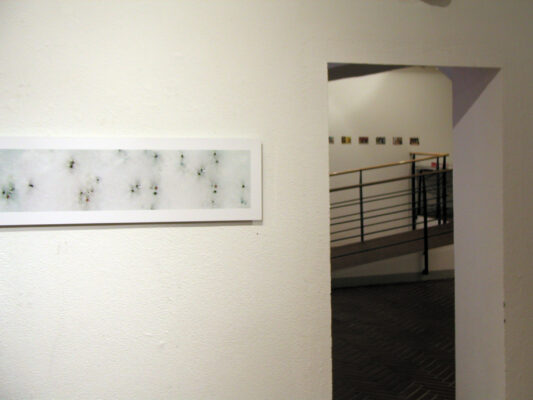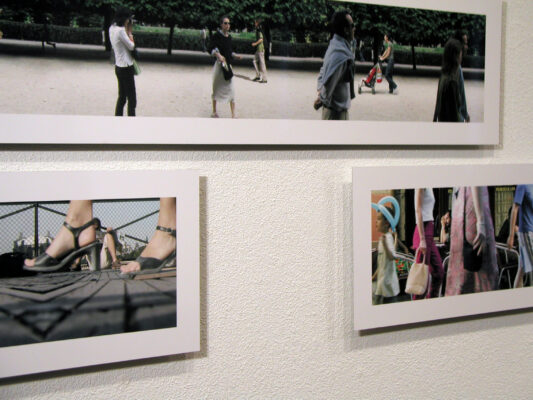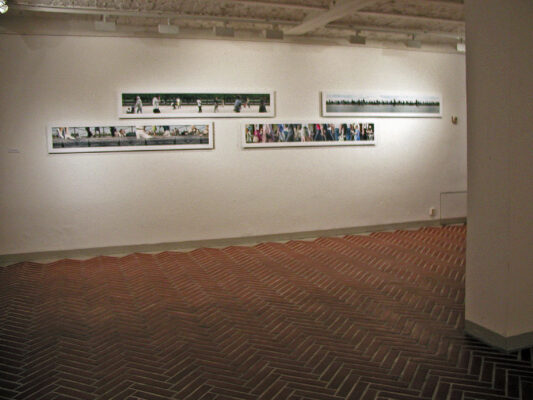Opening: Thursday, 12.6. 2003
The FOTOGALERIE WIEN carries out an annual art exchange with a foreign gallery or institution, 2002/2003 with Finland. Part I of the exchange project, KORRELATIONEN /KORRELAATIOITA, the presentation of Finnish positions in Austria, was shown in June 2002 at FOTOGALERIE WIEN in Vienna and – through our mediation – in December 2002 at Fotoforum West in Innsbruck. The exhibitions in Austria were well attended, the interest in Finnish art and the response to what was shown was enormous. Part II with Austrian positions can now be seen in Finland at the Northern Photographic Center in Oulu and at the Peri – Centre of Photography in Turku.
What fascination with the “other”, with the “foreign” on the one hand, and what connection – overlap in thinking and working – is there between the artists of these two countries on the other? Interesting for us as curators of a first offer of 20 Austrian artists and then the final selection of the Finnish curators of seven positions was the result: Why was it especially the narrative, lyrical-poetic and also psychological works, in which the “inner” image and the state of mind are thematized, that met with particular interest, and the more conceptual, documentary works were more or less excluded?
Weren’t the works of the Finnish artists also primarily located in the field of subjective and staged photography – an inner, emotional quality? Weren’t the poetry and opulence, power and precision of the image compositions in the Finnish show what was so impressive? Not a “quick” shot, not lapidary en passant, not a simple narration of what is seen, but always precisely composed and staged reflections on being.
We live in a networked world. Exchanges about art, tendencies and opinions take place permanently and influence attitudes in art. Nevertheless, we believe that there is such a thing as country-specific and regional expressions. Culture, history, politics and social structures are the germ cells from which we begin to operate and work out our artistic attitudes.
One question that we as a board of trustees would like to raise rather than answer is: are there parallels in the views and choice of themes of the artists in Finland and Austria?
One real difference between the Finnish and Austrian artists involved in the art exchange project is that the Finnish contributions come almost exclusively from purely photographic artists, whereas the Austrian participants come mainly from the visual arts and work across media: Photography, collage, video, graphics, maleriei, installation, digital image processing. This fact is quickly explained, because until recently there was no possibility to study artistic photography in Austria. Photo institutions and galleries, almost all of which were founded at the beginning of the 1980s, can be counted on one hand. And yet, the interest in the medium of photography in Austria has been an exceedingly great one for many years, but with a few exceptions operating purely photographically, it has been used and advanced primarily by artists coming from the field of fine arts and new media.
Among the Austrian positions:
Iris Andraschek *1963 in Horn. In the exhibitions her latest work O.T., Canada 2002/2003 (photo books) will be shown. She is mainly concerned with the observation and interpretation of her own living space. The special feature of her work, however, is that the banally familiar is transformed into a strange world through her deliberate use of alienation, which oscillates between enchanting and oppressive. This new world irritates and disturbs, but at the same time opens up spaces for a possible re-examination of and reflection on social structures and norms. Andraschek often developed artistic projects in public, especially rural spaces.
Renate Bertlmann *1943 in Vienna. She shows the photographic works: Zärtliche Berührungen (1976) in combination with Slime (2000) and R. watchning her star war models (2000) in combination with 3 star war models (2000). Her works are often strident, provocative, ironic, yet exceedingly humorous, affectionate and subtle. They revolve around themes such as: Kitsch, fashion, love, sexuality, taboos, pornography, gender struggle, role stereotypes, … The roots of her artistic practice lie in performance art, furthermore objects, drawings and photographs are and were part of her enormous oeuvre. She does not want her works to be understood as a feminist discourse, but as a personal approach to the aforementioned range of topics.
Maria Hahnenkamp *1959 in Eisenstadt. She shows photographic works from her new series: O.T. (from the series one woman) and O.T. (from the series two women) from 2001/2002. Her works address the fixation and reproduction of the feminine that has taken place from history, tradition, art and various media used today. The view that is examined here is primarily that from “outside”. This is critically analyzed, but not in the sense of analysis and documentation, but rather reevaluated and interpreted in a very poetically fragmented, almost abstract visual language. The subject becomes the object of investigation, the physical, the body are the focus, the merging of collective memory and personal experience is significant here. Maria Hahnenkamp often also works with slide installations in which filmic processes are addressed.
Ina Loitzl *1972 in Klagenfurt. Her scratch paintings, 1997-99, are on public view for the first time. Household catalogs and flyers – a range of goods specifically intended to make women happy and addressed to women: mail-order catalogs – the wish catalog for the whole family -, sex-article catalogs – addressed more to him than to her -, TV commercials – tailored to her or him, depending on the product -, advertising in newspapers, magazines, in public spaces, on the Internet … These are the starting materials of Ina Loitzl to draw a grotesquely humorous satire on social clichés, desires and values suggested by advertising to a consumerist mass. Her frottages are a biting reckoning with the kitsch that surrounds us, the stupidity and the “never-ending stories” – the elaborate battle plans of the merchandise and advertising industry, from which the dreams of our being, our state of mind are knitted.
Michael Michlmayr *1965 in Vienna. In the exhibitions his latest digital photographic works “Passages”, 2001/2002, are shown. His works are digital image condensations, image compositions in which several scenes of a certain place are strung together and interwoven or even multiplied. Through these digital interventions, the panorama-like formats show scenes of a reality that could never have taken place in this way. When looking at these works, when deciphering the temporally interwoven sequences of action, the proximity to cinematic stagings and stage dramaturgies becomes obvious. Reality is redefined, the drama, the confrontation of the moment reevaluated.
Fiona Rukschcio *1972 in Vienna. She presents the work Rome (photo-text collages) from 2000, which reflects in a very personal, critical, but also humorous way female positioning par excellence as well as that of the artist in our contemporary society and in the art business. In addition to photography and photo-text collages, she is primarily active in the field of video.
Ingeborg Strobl * 1949 in Schladming. Her work To Be from 2002/2003 (slide show), which she developed especially for the exhibitions in Finland, is a kind of summary of her artistic ideas and photographs of recent years with the inclusion of texts and newly created photographs that describe life, the flow of life. Beauty, decay, becoming and passing, nature, seasons, landscape and the presence and influence of man are cited.
Seminar with lectures (artists and management FOTOGALERIE WIEN) and the presentation of some videos of the participants to both exhibitions.
